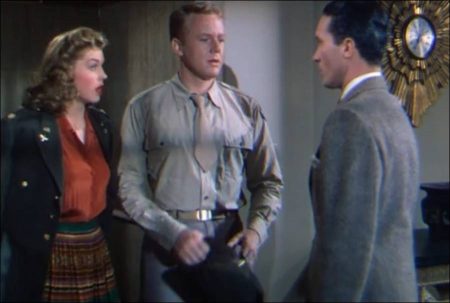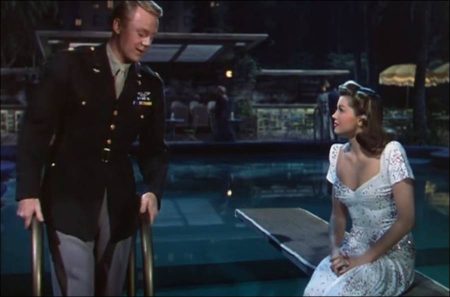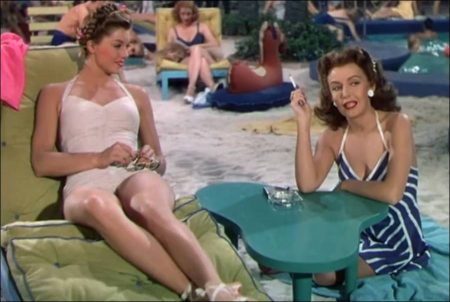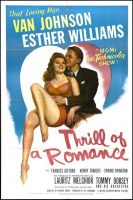Taglines: Musical bliss with every kiss!
Thrill of a Romance movie storyline. Cynthia Glenn (Esther Williams) is a swimming instructor in Los Angeles, where she lives with her scatterbrained aunt and uncle Nona and Hobart (Spring Byington and Henry Travers). While demonstrating a dive, she catches the eye of an interested stranger, Bob Delbar (Carleton G. Young). Cynthia receives flowers from the stranger. The two court for one month, then get married.
On their honeymoon at the hotel Monte Belva, they encounter the famous opera singer, Nils Knudsen (Lauritz Melchior). Major Thomas Milvaine (Van Johnson), also staying at the hotel, notices Cynthia. A rich colleague, J. P. Bancroft, insists that Bob come to Washington, D.C. to complete a deal. While Cynthia cries over Bob’s departure, Tommy, staying next door, comforts her.
Next day by the pool, she and Bancroft’s daughter, Maude (Frances Gifford) speculate as to which hotel guest is Major Thomas Milvaine, the decorated war hero, who shot down “16… or was it 26 war planes?” and was stuck on a deserted island for a month. After Maude teases Cynthia about being at the hotel without her husband, Cynthia performs an elaborate dive and runs into Major Milvaine himself, who can’t actually swim, so she teaches him how.
For the rest of the week, Cynthia and Tommy continue accompanying each other to dinner and other activities around the hotel, including swimming. On the last day, Cynthia receives a telegram from Bob informing her that he can’t return for another week. Tommy is leaving the next morning, and Cynthia is distraught, so she retires to her room.
Tommy realizes he loves her, rushes to their adjoining balcony, confesses his love and that he will stay for another week. Cynthia reiterates that she’s a married woman, and therefore won’t let him hop over the hedge separating their two balconies and make love to her. She calls Bob and begs him to return, but he can’t.
Cynthia looks for Tommy the next morning, but is told that he has checked out. She goes for a walk on the Sunset Trail. Tommy sets off after her on the trail. Bob telephones the hotel and leaves a message that he will arrive the following morning. Tommy and Cynthia spot a tree with initials engraved on it. Cynthia tells Tommy that she loves him but wants to give her marriage a chance, so they should never see each other again. However, they lose their way and are forced to spend the night in the woods.
The next morning, Bob can’t find his wife in the hotel. When they do return, Tommy tries to explain their disappearance, while Bob realizes that the two are in love. He becomes angry with Cynthia, and announces he wants an annulment. Bob calls his lawyer, learning he was never actually divorced from his previous wife. Tommy leaves to become an instructor at Darwin Field, and Cynthia returns home to her aunt and uncle.
Thrill of a Romance (also known as Thrill of a New Romance)[2] is an American Technicolor romance film released by Metro-Goldwyn-Mayer in 1945, starring Van Johnson, Esther Williams and Carleton G. Young, with musical performances by Tommy Dorsey & his Orchestra and opera singer Lauritz Melchior. The film was directed by Richard Thorpe and written by Richard Connell and Gladys Lehman.
The film tells the story of Cynthia Glenn, who, after a whirlwind romance, marries a rich businessman. However, on the first day of their honeymoon, her new husband is called away to Washington, leaving her alone at a resort. During this time, she meets and falls in love with a war hero, Tommy Milvaine, played by Van Johnson.
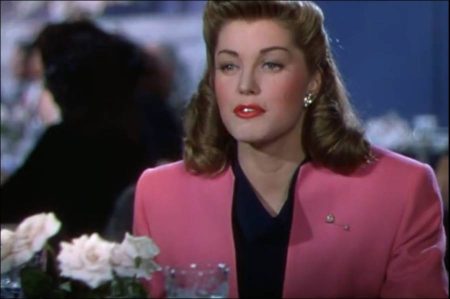
This was the second of five films that paired Williams and Johnson together. Made over a period of eight years, those that followed were Easy to Wed (1946), Duchess of Idaho (1950) and Easy to Love (1953). Thrill of a Romance was a box office success, becoming the seventh-highest-grossing film of 1945. It was the seventh top-grossing film of 1945 in the US and Canada, earning $4,338,000. It also earned $2,682,000 in other countries, resulting in a profit of $3,259,000.
It was Esther Williams’ first film following her debut as a star in Bathing Beauty. MGM described the film as “primarily a human comedy with musical trimmings”. Johnson’s casting was announced in March 1944. Robert Z. Leonard was meant to direct but he fell ill so Richard Thorpe took over.
When attempting to create the right shade of blue for the swimming pool, the set decorator discovered that the paint he had used to color the cement had dissolved after adding the chlorine to the pool, creating a mess with the consistency of homogenized milk. The pool had to be drained and refilled.
In her autobiography, Williams said that the studio attempted to put her and costar Van Johnson together in public as much as possible, even though she was involved with future husband (and ex-husband) Ben Gage. When asked why they didn’t date, Johnson replied “because I’m afraid she can’t get her webbed feet into a pair of evening sandals.”
While filming, Williams and Thorpe rarely got along. After Williams forgot several lines during one take and the cast and crew began to leave for lunch, Williams notified Thorpe of her mistake. He called the entire crew back to the stage, saying “Turn the lights back on, boys. This lady wants to act.” Williams locked herself in her dressing room for the rest of the day. After that episode, Thorpe stopped picking on her.
When filming the backstroke scenes in the swimming pool, Williams had to place her hand under Johnson’s back to keep him afloat. The Office of War Information voiced concern that the film, set in an elegant resort, would pose problems with overseas distribution. A memo from the agency claimed that films boasting of American opulence would be resented by the allies closer to the fighting front.
Thrill of a Romance (1945)
Directed by: Richard Thorpe
Starring: Esther Williams, Van Johnson, Carleton G. Young, Frances Gifford, Henry Travers, Spring Byington, Lauritz Melchior, Jane Isbell, Ethel Griffies, Donald Curtis, Helene Stanley
Screenplay by: Richard Connell, Gladys Lehman
Cinematography by: Harry Stradling
Film Editing by: George Boemler
Costume Design by: Kay Dean, Irene
Set Decoration by: Jack Bonar, Edwin B. Willis
Art Direction by: Cedric Gibbons, Hans Peters
Music by: Calvin Jackson, George Stoll
MPAA Rating: None.
Distributed by: Metro-Goldwyn-Mayer
Release Date: May 23, 1945
Views: 252
